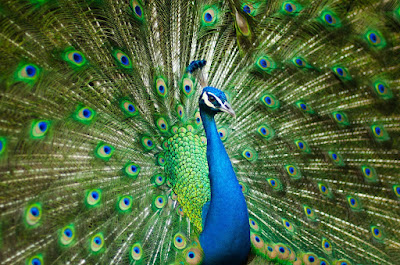Introduction to India's National Pride
Peacocks have long held a special place in Indian culture, biodiversity, mythology, and art. Their grace, beauty, and symbolism made them an ideal choice when India declared the Indian Peafowl (Pavo cristatus) as its national bird in 1963. This decision wasn't just based on beauty but symbolised India's deep-rooted traditions, natural heritage, and spiritual significance. Let’s explore why this decision was made and discover the rarest peacock in India among its vibrant colour variations.
Symbolism Behind Declaring the Peacock as National Bird
The Indian peacock, known scientifically as "Pavo cristatus", is admired for its shimmering blue and green plumage. The Indian Peafowl is native to the Indian subcontinent and is found in nearly every part of the country. Its vibrant colours, particularly the shimmering blue and green plumage, make it instantly recognisable. The bird also holds religious significance, The Lord Murugan and appears in numerous ancient scriptures and Lord Krishna is often depicted with a peacock feather in his crown, and Goddess Saraswati is associated with the elegant bird.
And Furthermore, its cultural importance in art, poetry, and dance cemented its status. While selecting a national symbol, authorities considered uniqueness, heritage value, and accessibility across India criteria perfectly met by what many call the rarest peacock in India.
Ecological Significance and Conservation
Peacocks are native to the Indian subcontinent and are easily found in forests, farmlands, and even temple grounds. Peacocks are protected under the Indian Wildlife (Protection) Act, 1972. The rarity of unique colour morphs emphasises the need for stronger wildlife protections. Protecting the rarest peacock in India becomes a matter of pride and ecological importance. Celebrating the rarest peacock in India through festivals, art and folk traditions reflects the deep emotional bond Indians have with this bird.
Stunning Rare Colour Variations of Indian Peafowl
While the classic Indian blue peafowlis most known, there are some rare and breathtaking colour variants. The white peacock is the most famous of them. Contrary to common belief, it's not albino but a result of a genetic mutation called leucism, which gives it a pure white appearance. These peacocks, though rare, are occasionally found in captivity or protected areas.
Another extraordinary variant is the Black-shouldered peacock, where the upper body feathers are darker than usual. These colour morphs reflect nature’s stunning diversity and make the rarest peacock in India a fascinating subject for bird lovers.
Conclusion
India’s national symbols are a proud representation of the country’s heritage. The peacock’s elegance, spiritual importance, and ecological role made it the natural choice for India’s national bird. Exploring the rarest peacock in India reminds us of the awe-inspiring wonders hidden within our natural world.
The Indian peacock is more than a bird it's a symbol of India's soul.
Whether spotted dancing in monsoon rains or featured in traditional Indian motifs, the peacock remains an enduring symbol of elegance, mystery, and national identity.
Sponsorship By :
"This Content Sponsored by Buymote Shopping app
BuyMote E-Shopping Application is One of the Online Shopping App
Now Available on Play Store & App Store (Buymote E-Shopping)
Click Below Link and Install Application: https://buymote.shop/links/0f5993744a9213079a6b53e8
Sponsor Content: #buymote #buymoteeshopping #buymoteonline #buymoteshopping #buymoteapplication"












No comments:
Post a Comment